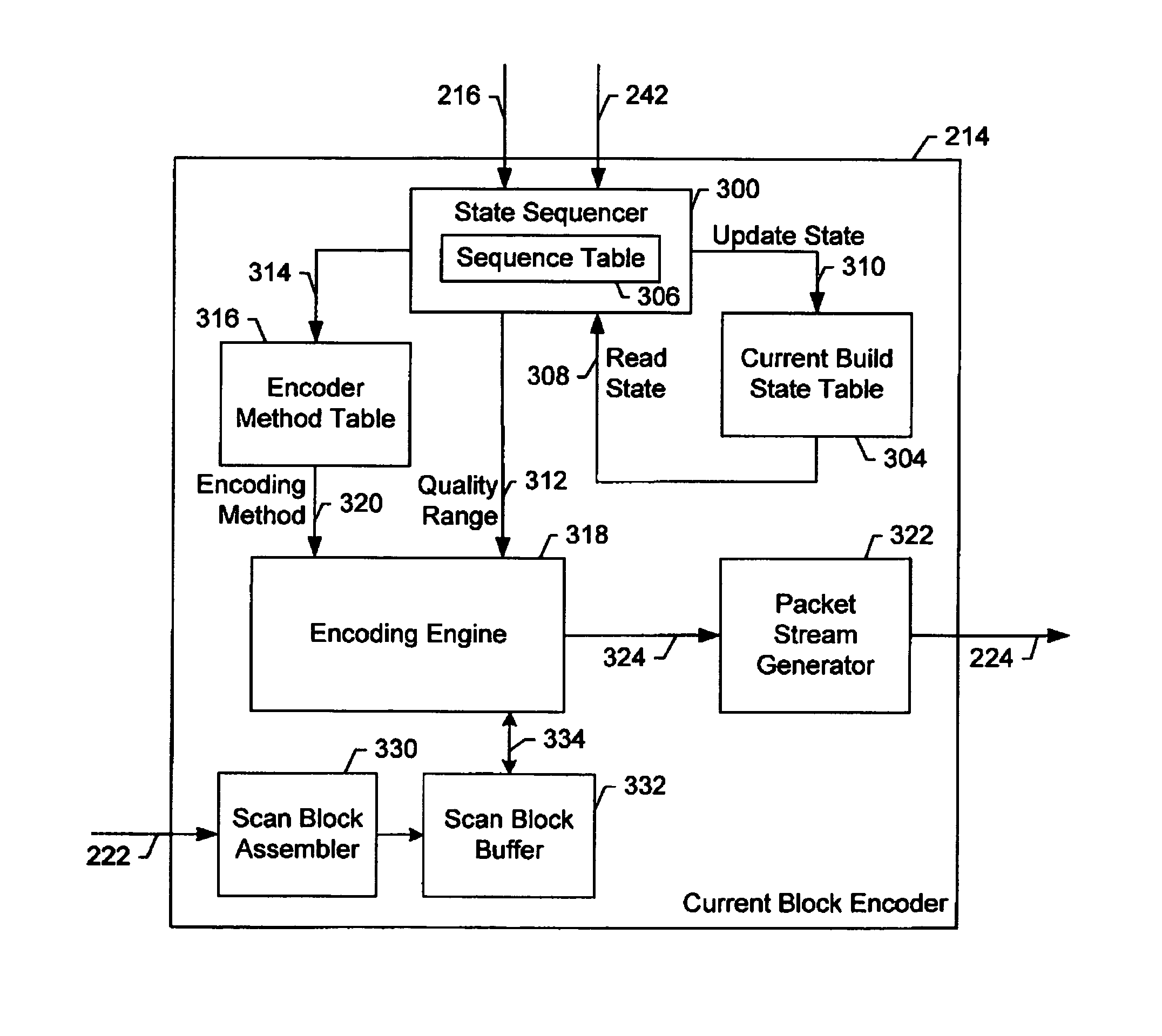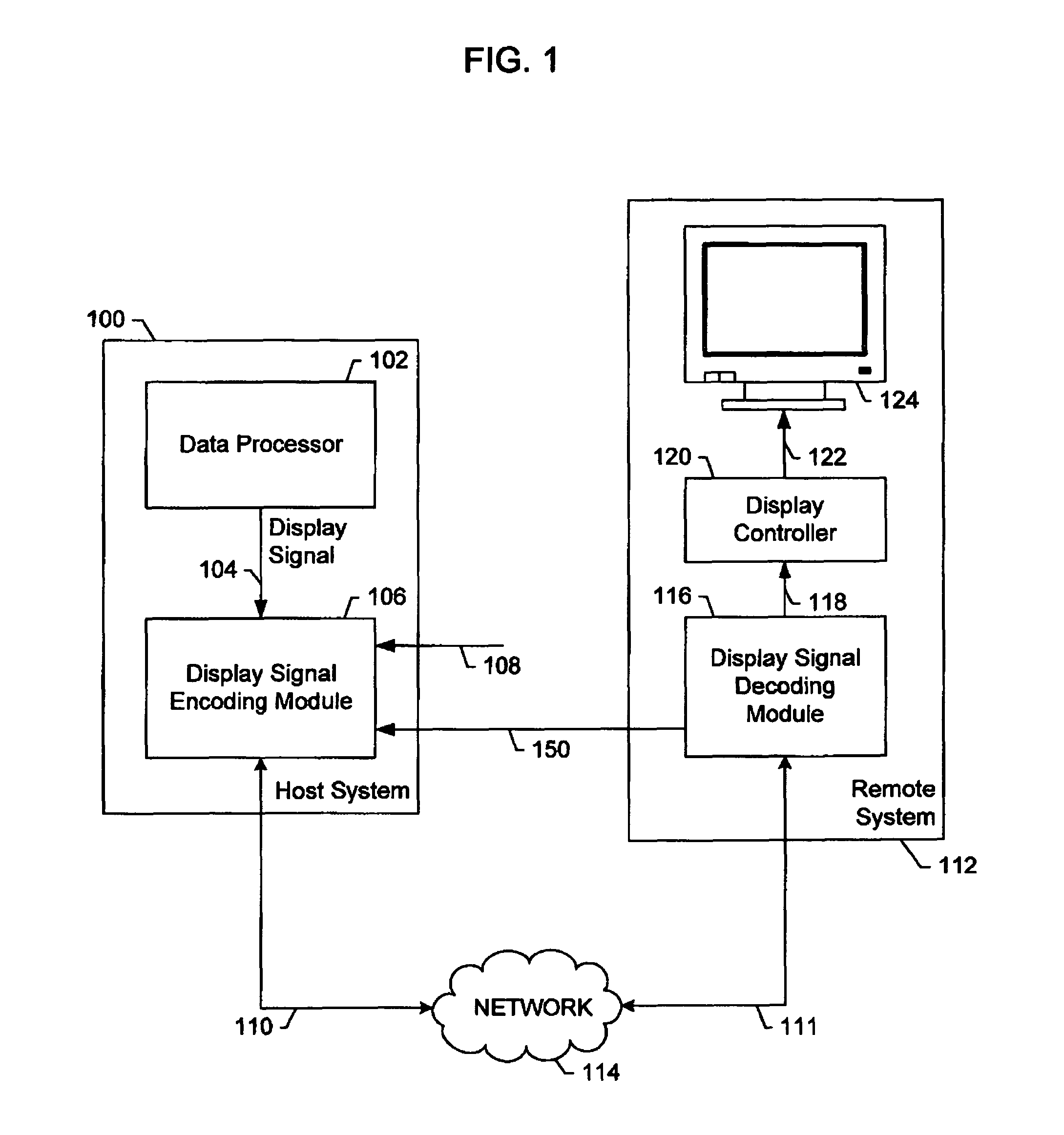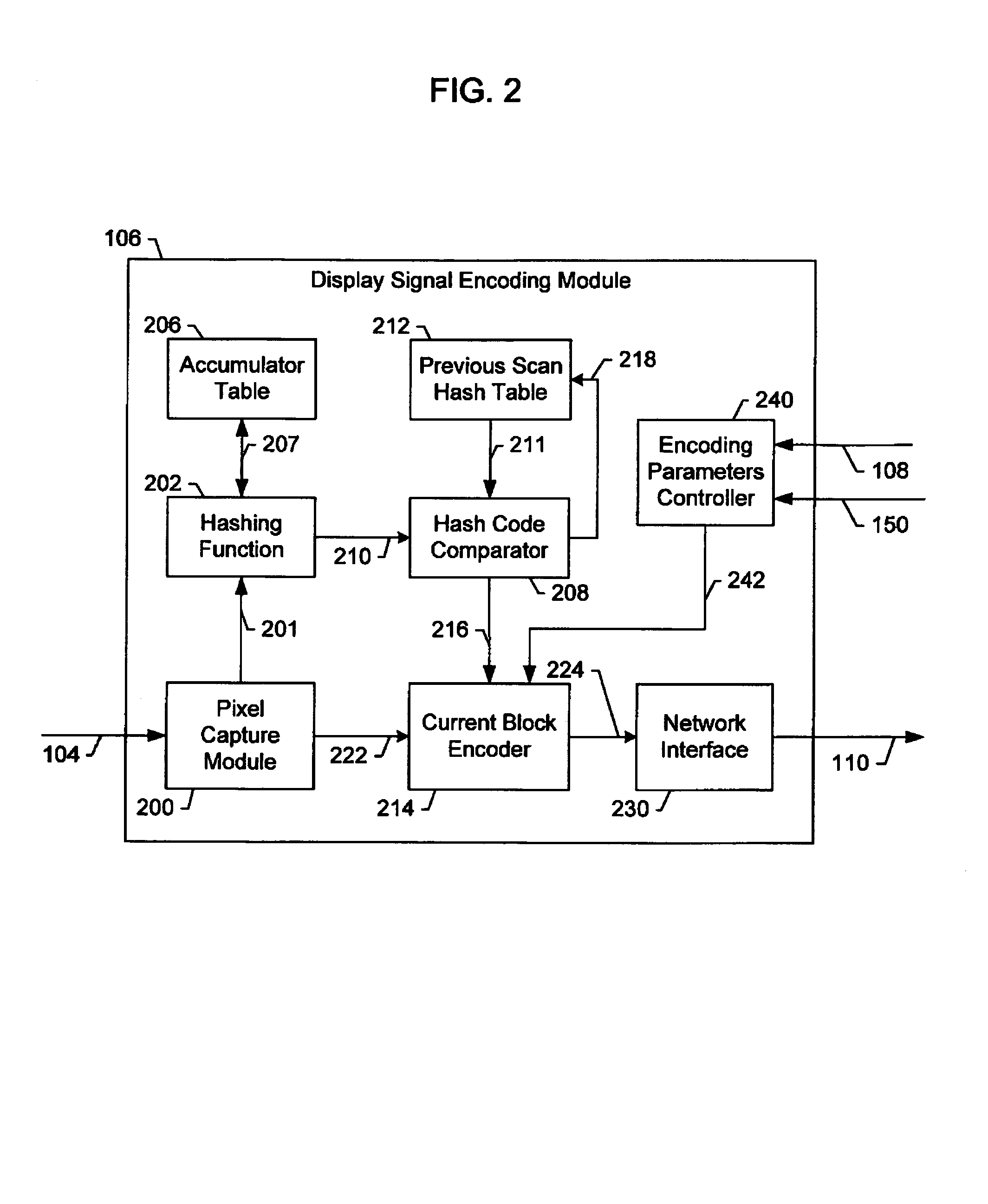Apparatus for block-selected encoding of a digital video signal
a video signal and video encoding technology, applied in the field of video signal encoding methods, can solve the problems of lack of encoding support for compound images, lack of dynamic images, complex and difficult management of personal computers, etc., to save both save memory and memory bandwidth, and optimize bandwidth consumption
- Summary
- Abstract
- Description
- Claims
- Application Information
AI Technical Summary
Benefits of technology
Problems solved by technology
Method used
Image
Examples
Embodiment Construction
[0026]FIG. 1 presents a system architecture of one embodiment of the invention. In the embodiment described, a display signal encoding module enables the transfer of computer display images from a host data processor to a remote display system. However, the invention is also applicable to other media transport systems, for example recording, storage or archival systems.
[0027]Referring to FIG. 1, host system 100 has data processor 102 with digital display output signal 104. In the described embodiment, digital display output signal 104 is a Digital Visual Interface (DVI) output signal. In alternative embodiments, digital display output signal 104 may be other display interfaces such as VESA Digital Packet Video Link (DPVL), High Definition Multimedia Interface (HDMI), Unified Display Interface (UDI), DisplayPort, IEEE1394 / Firewire™ or others. In another alternative embodiment, digital display output signal 104 may be a bus interface that uses a DMA controller to access a frame buffer...
PUM
 Login to View More
Login to View More Abstract
Description
Claims
Application Information
 Login to View More
Login to View More - R&D
- Intellectual Property
- Life Sciences
- Materials
- Tech Scout
- Unparalleled Data Quality
- Higher Quality Content
- 60% Fewer Hallucinations
Browse by: Latest US Patents, China's latest patents, Technical Efficacy Thesaurus, Application Domain, Technology Topic, Popular Technical Reports.
© 2025 PatSnap. All rights reserved.Legal|Privacy policy|Modern Slavery Act Transparency Statement|Sitemap|About US| Contact US: help@patsnap.com



